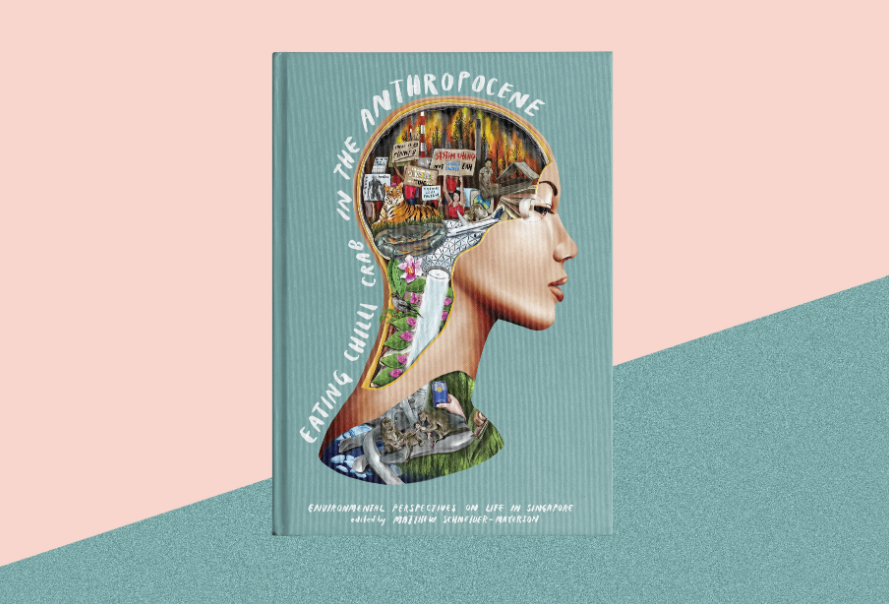Written by Samuel
Eating Chilli Crab in the Anthropocene is a collection of essays written by students from Yale-NUS College and NUS, edited by Assistant Professor Matthew Schneider Mayerson. The book can purchased at Ethos Books here.
“Eating Chili Crab in the Anthropocene” is a wonderful book that challenges conventional narratives, having us rethinking current ways of experiencing Singapore, and its title is testament to this: situating a delicacy signature to this island-city in a climate crisis world, and urging us to reflect on the ethics around our relentless extraction from nature.
Ethics. Such things tend to resurface in these compilation of essays, and Feroz’s and Al’s “Learning to thrive”, makes this most clear. Are students today averse to conversations around values, morals, and the harrowing injustices that affect our time? The book is firm on the fact that the situation occurs on a much larger scale, going far beyond the individual, to the deeply entrenched – “dominant” – virtues and systems.
The idea of the “individual” is thus questioned here. From Xin’s “Consuming tigers”, Jin Hee’s “Javan Mynahs” to Michele’s “Feeding the monkeys” and Monica’s “Lovable Lutrines”, man’s relationship with our wondrous biodiversity is put on display, which makes one wonder whether this human-centric view was what led to our historical and contemporary crises. Perhaps it is time then, to adopt a more humble, multi-species perspective.
When it comes to perspective, the book is apt at swiftly guiding us in looking at incidents through a new lens. Sarah’s “To build a city state and erode history”, has us take a step back to reexamine our nation’s drive for supposed ‘progress’, often forgetting the ‘prosperity’ and ‘happiness’ that should come after, or which are otherwise misconstrued with excessive economic growth. Xiyao’s “Dumpster diving in Semakau” and Mathias’ “Changing course” then bring us on a tour around landmarks like Semakau island and Changi Jewel that have so frequently been painted as a boon to our nation, the gross marginalisation and oppression finally making their emotive entrance in Yogesh’s “An Oily Mirror” and Xiaoyun’s “Eating Chili Crab in the Anthropocene”. It requires great finesse to have such maneuvering in a way that is unobtrusive and not in adherence to the aforementioned linear flow of ideas.
The book ultimately ends with a note of hope. Aidan’s “Singapore on Fire” and Betrand’s “Another Garden city is possible” comes from a place of hurt, heart and heated conviction, conveying how, sometimes, a firm stance is what is most needed. It inspires us to fight for the causes we feel strongly for, and realise that we are not alone in this broader, all-empowering movement for change. We do not exist in a vacuum; injustices, crises, and movements are ultimately intersectional. As COVID’19 exposes what is gravely wrong in our systems and structures, it is the opportune moment to push for a future we want to see: A future that is inclusive, just and equitable. The book is so much more than this. It is a call for change. It is a call for action. And as Bertrand best puts it, “Another Garden City is possible. In this age of climate crisis, we owe it to ourselves, and to future generations, to build it”.

No Responses